Find the value of p and the value of q.
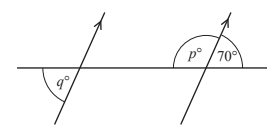
(Cambridge Assessment International Education. 0580/22, May/June 2017, Q 8)
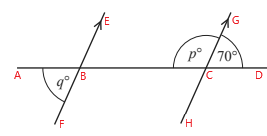 |  |
2.In the diagram, AB and CD are parallel.
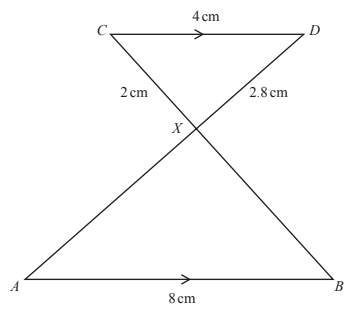
AD and BC intersect at X.
AB = 8 cm, CD = 4 cm, CX = 2 cm and DX = 2.8 cm.
(a) Complete this mathematical statement.
Triangle ABX is ............................................ to triangle DCX.
(b) Calculate AX.
(c) The area of triangle ABX is y cm².
Find the area of triangle DCX in terms of y.
(Cambridge Assessment International Education. 0580/22, May/June 2017, Q 24)
| (a) | Triangle ABX is similar to triangle DCX.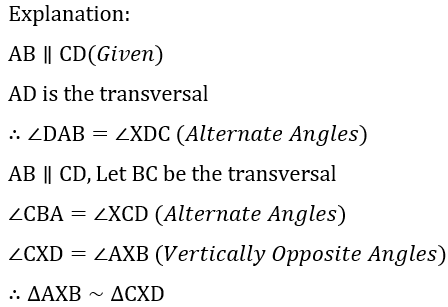 |
| (b) | 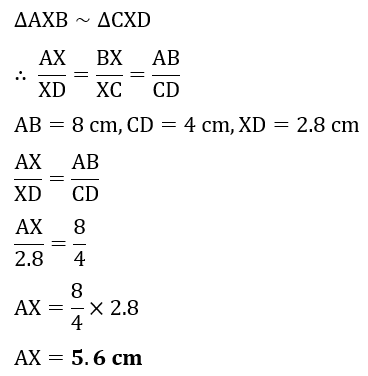 |
| (c) |  |
3. In the diagram, AB is a straight line. Find the value of x and the value of y.
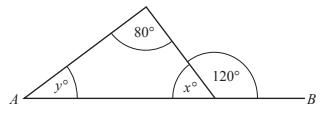
(Cambridge Assessment International Education. 0580/22, October/November 2017, Q 5)
 |
4. The area of a triangle is 528 cm².The length of its base is 33 cm.
Calculate the perpendicular height of the triangle.
(Cambridge Assessment International Education. 0580/22, October/November 2017, Q 7)
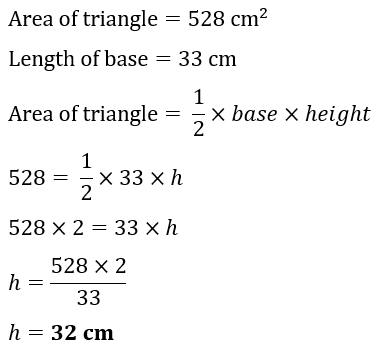 |
5. The diagram shows part of a regular polygon. The exterior angle is x°.
The interior angle is 29x°. Work out the number of sides of this polygon.
 (Cambridge Assessment International Education. 0580/22, October/November 2017, Q 17)
(Cambridge Assessment International Education. 0580/22, October/November 2017, Q 17)
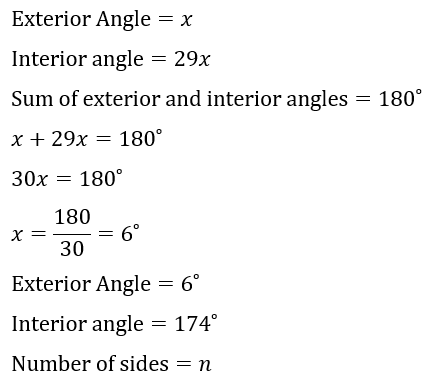 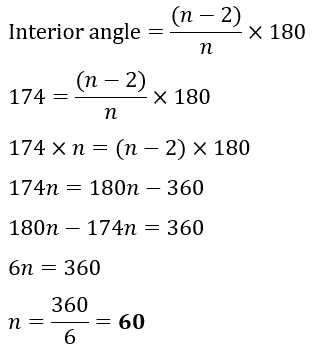 |
6. The diagram shows a regular pentagon and a kite.

Complete the following statements.
(a) The regular pentagon has ................................... lines of symmetry
(b) The kite has rotational symmetry of order ...................................
(Cambridge Assessment International Education. 0580/22, February/March 2018, Q 5)
| (a) | The regular pentagon has 5 lines of symmetry |
| (b) | the kite has rotational symmetry of order 1 |
7. A, B, C and D are points on the circumference of the circle.
AC and BD intersect at X.

(a) Complete the statement.
Triangle ADX is ..................................................... to triangle BCX.
(b) The area of triangle ADX is 36 cm² and the area of triangle BCX is 65.61 cm².
AX = 8.6 cm and DX = 7.2cm. Find BX.
(Cambridge Assessment International Education. 0580/22, February/March 2018, Q 14)
| (a) | Triangle ADX is similar to triangle BCX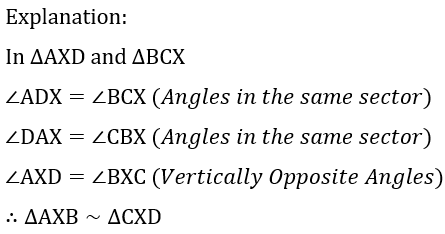 |
| (b) | 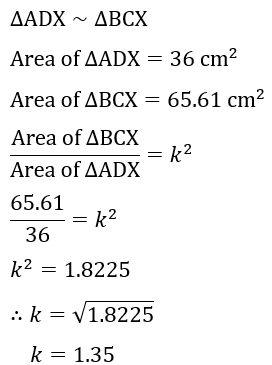 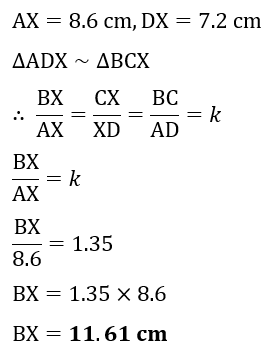 |
8. Complete the statements.
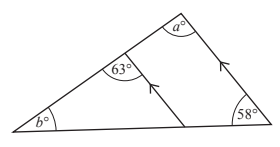 (Cambridge Assessment International Education. 0580/22, February/March 2018, Q 15)
(Cambridge Assessment International Education. 0580/22, February/March 2018, Q 15) 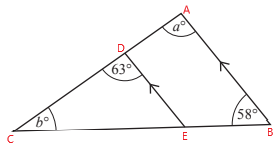 | 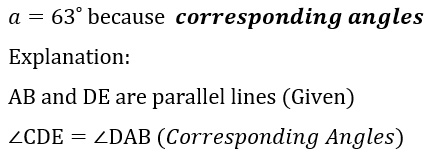  |
9. The diagram shows two mathematically similar triangles, T and U.
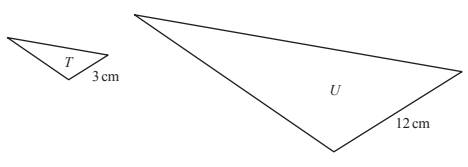
The area of triangle T is 5 cm².
Find the area of triangle U.
(Cambridge Assessment International Education. 0580/22, May/June 2018, Q 11)
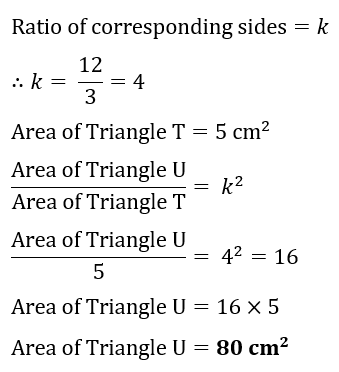 |
10. In a regular polygon, the interior angle is 11 times the exterior angle.
(i) Work out the number of sides of this polygon.
(ii) Find the sum of the interior angles of this polygon.
(Cambridge Assessment International Education. 0580/42, May/June 2018, Q 9b)
| (i) | 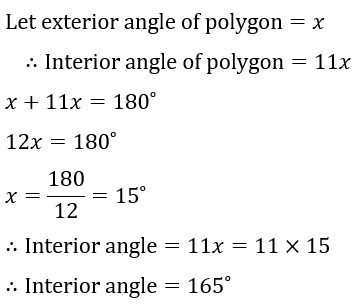 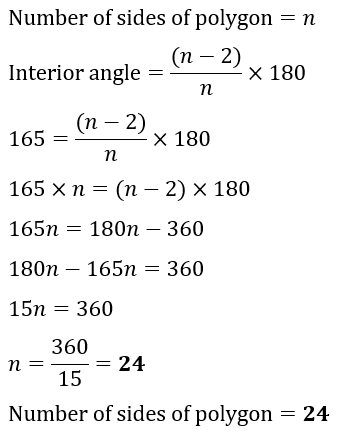 |
| (ii) | 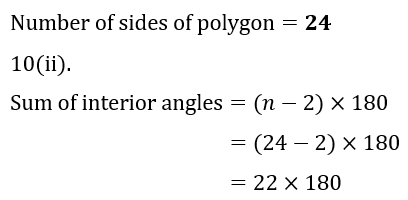 |
11. Complete each statement.
| (a) | A quadrilateral with one pair of parallel sides is called a trapezium |
| (b) | An angle greater than 90° but less than 180° is called an obtuse angle |
12. AC is parallel to FBD, ABC is an isosceles triangle and CBE is a straight line.
Find the value of x.
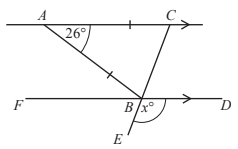 (Cambridge Assessment International Education. 0580/42, May/June 2019, Q 2a)
(Cambridge Assessment International Education. 0580/42, May/June 2019, Q 2a)
 |
13. (a) Show that each interior angle of a regular pentagon is 108°.
(b) The diagram shows a regular pentagon ABCDE.

The vertices of the pentagon lie on a circle, centre O, radius 12cm.
M is the midpoint of BC.
(i) Find BM.
(ii) OMX and ABX are straight lines.
(a) Find BX.
(b) Calculate the area of triangle AOX.
(Cambridge Assessment International Education. 0580/42, May/June 2019, Q 7)
| (a) |  |
| (b)(i) | 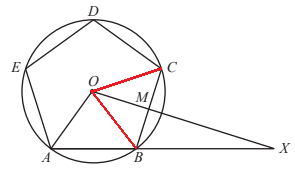 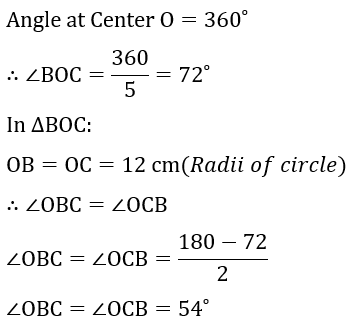 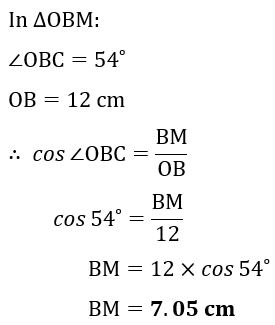 |
| (b)(ii)(a) |  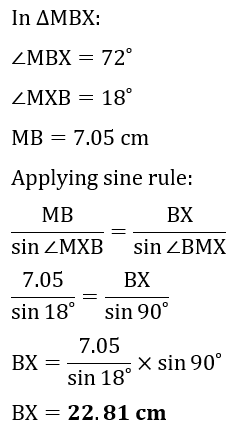 |
| (b)(ii)(b) | 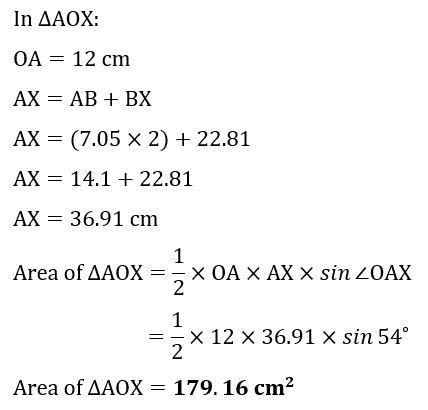 |
14. The diagram shows two mathematically similar shapes with areas 295 cm² and 159.5 cm².
 The width of the larger shape is 17 cm.
The width of the larger shape is 17 cm.Calculate the width of the smaller shape.
(Cambridge Assessment International Education. 0580/42, May/June 2019, Q 10(c))
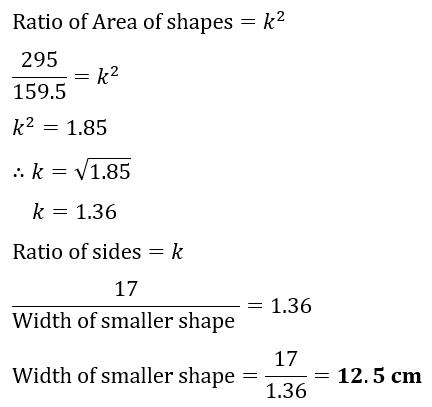 |
15. A regular polygon has an interior angle of 176°.
Find the number of sides of this polygon.
(Cambridge Assessment International Education. 0580/22, October/November 2019, Q 12)
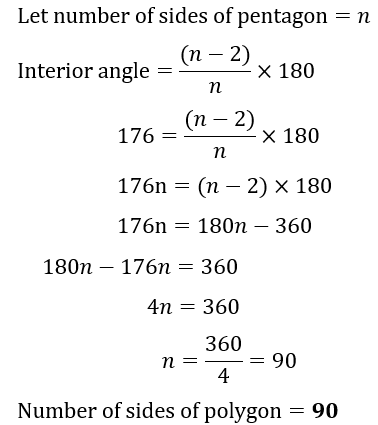 |